|
Sunday:
October 10, 2004 | |
0001 GMT |
 |
Radio astronomers remove the blindfold
U.K. radio astronomers at the Jodrell Bank Observatory, working with colleagues from Europe and the U.S., have demonstrated a new technique that will revolutionize the way they observe.
 FULL STORY FULL STORY
 |  |

|
 |
Software enables satellite self-service in space
NASA scientists recently radioed artificial intelligence software to a satellite and tested the software's ability to find and analyze errors in the spacecraft's systems.
 FULL STORY FULL STORY
 |  |
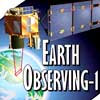
|
 |
OTHER HEADLINES Additional stories today
|
 |
World's largest communications satellite checked out -- Boeing delivered its ninth Boeing 702 spacecraft, the world's largest communications satellite, which is providing broadband Internet services for Telesat of Canada and its customers throughout North America.

New JPL chief engineer selected -- NASA's Jet Propulsion Laboratory has appointed Brian Muirhead as Chief Engineer. Muirhead had previously served as chief engineer for NASA's Mars Science Laboratory mission, and was flight system manager and project manager of NASA's Mars Pathfinder mission, which successfully landed on the red planet and operated the Sojourner rover in 1997.

Thirsk replaces Williams as NEEMO 7 commander -- Veteran Canadian astronaut Robert Thirsk will replace David Williams as the commander of NEEMO 7, the next "NASA Extreme Environment Mission Operations" mission to the undersea laboratory Aquarius.
|
 |
|
Saturday:
October 9, 2004 | |
0001 GMT |
 |
What is it? Mystery object discovered by astronomers
Astronomers using the Gemini North and Keck II telescopes have peered inside a violent binary star system to find that one of the interacting stars has lost so much mass to its partner that it has regressed to a strange, inert body resembling no known star type.
 FULL STORY FULL STORY
 |  |
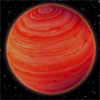
|
 |
Earthquake forecast has amazing success rate
A NASA-funded earthquake forecast program has an amazing track record. Published in 2002,
the Rundle-Tiampo Forecast has accurately forecast the locations of 15 of California's 16 largest
earthquakes this decade, including recent tremors.
 FULL STORY FULL STORY
 |  |
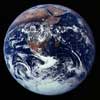
|
 |
|
Friday:
October 8, 2004 | |
0214 GMT |
 |
Mars rovers probing more water history at two sites
NASA's Spirit and Opportunity have been exploring Mars about three times as long as originally scheduled. The more they look, the more evidence of past liquid water on Mars these robots discover.
 FULL STORY FULL STORY
 |  |

|
 |

Additional coverage for subscribers:
 VIDEO:
NEW PANORAMA FROM COLUMBIA HILLS WITH NARRATION QT VIDEO:
NEW PANORAMA FROM COLUMBIA HILLS WITH NARRATION QT
 VIDEO:
UPDATE FROM ROVER PROJECT OFFICIALS QT VIDEO:
UPDATE FROM ROVER PROJECT OFFICIALS QT
 SUBSCRIBE NOW SUBSCRIBE NOW

|
Wiring short caused Sea Launch engine shutdown
The international Sea Launch group expects to resume commercial satellite deployment missions by year's end now that investigators have concluded their inquiry into a troubled June flight.
 FULL STORY FULL STORY
 EARLIER COVERAGE EARLIER COVERAGE
 |  |

|
 |
Swift observatory gets new launch date
Its launch delayed by Florida's seemingly magnetic attraction to hurricanes this year, NASA's Swift observatory has a new target liftoff date to the delight of eager scientists around the world.
 FULL STORY FULL STORY
 |  |
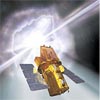
|
 |

Additional coverage for subscribers:
 VIDEO:
DELTA 2 ROCKET FIRST STAGE IS ERECTED ON PAD 17A QT VIDEO:
DELTA 2 ROCKET FIRST STAGE IS ERECTED ON PAD 17A QT
 VIDEO:
SOLID ROCKET BOOSTERS ARE RAISED INTO TOWER QT VIDEO:
SOLID ROCKET BOOSTERS ARE RAISED INTO TOWER QT
 VIDEO:
MOBILE SERVICE TOWER MOVES SRBS INTO PLACE QT VIDEO:
MOBILE SERVICE TOWER MOVES SRBS INTO PLACE QT
 VIDEO:
NOSE CONE HOISTED INTO PAD CLEANROOM QT VIDEO:
NOSE CONE HOISTED INTO PAD CLEANROOM QT
 SUBSCRIBE NOW SUBSCRIBE NOW

|
|
Thursday:
October 7, 2004 | |
0348 GMT |
 |
Unraveling a 400-year-old supernova mystery
Four hundred years ago, sky watchers, including the famous astronomer Johannes Kepler, best known as the discoverer of the laws of planetary motion, were startled by the sudden appearance of a "new star" in the western sky, rivaling the brilliance of the nearby planets.
 FULL STORY FULL STORY
 |  |

|
 |
Satellite to seek nearest stars, brightest galaxies
A new NASA mission, called the Wide-field Infrared Survey Explorer, will scan the entire sky in infrared light in search of nearby cool stars, planetary construction zones and the brightest galaxies in the universe.
 FULL STORY FULL STORY
 |  |

|
 |
Genesis samples go to JSC
Following an extensive recovery effort since its Sept. 8 impact at a Utah landing site, the first scientific samples from the Genesis space probe arrived at NASA's Johnson Space Center this week.
 FULL STORY FULL STORY
 |  |
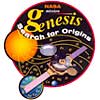
|
 |

Additional coverage for subscribers:
 VIDEO:
GENESIS SAMPLES ARRIVE IN HOUSTON QT VIDEO:
GENESIS SAMPLES ARRIVE IN HOUSTON QT
 SUBSCRIBE NOW SUBSCRIBE NOW

|
|
Wednesday:
October 6, 2004 | |
0258 GMT |
 |
Hurricane-delayed Delta looks for new launch date
It has weathered hurricanes Frances and Jeanne on Cape Canaveral's launch pad 17B and now a Boeing Delta 2 rocket is awaiting a new date to boost the Air Force's next Global Positioning System satellite in space.
 FULL STORY FULL STORY
 |  |
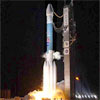
|
 |
Controllers troubleshooting Mars rover problem
Engineers on NASA's Mars Exploration Rover team are investigating possible causes and
remedies for a problem affecting the steering on Spirit. The relay for steering actuators on Spirit's right-front and left-rear wheels did not operate as commanded last week.
 FULL STORY FULL STORY
 |  |

|
 |
Frequent starbursts sterilize center of Milky Way
Life near the center of our galaxy never had a chance. Every 20 million years on average, gas pours into the galactic center and slams together, creating millions of new stars. The more massive stars soon go supernova, exploding violently and blasting the surrounding space with enough energy to sterilize it completely.
 FULL STORY FULL STORY
 |  |
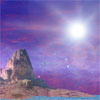
|
 |
|
Tuesday:
October 5, 2004 | |
0514 GMT |
 |
SpaceShipOne soars to capture $10 million X Prize
SpaceShipOne, flown by veteran test pilot Brian Binnie, rocketed into space history Monday, climbing higher than 62 miles for the second time in five days to win the $10 million Ansari X Prize for designer Burt Rutan and financial backer Paul Allen.
 FULL STORY FULL STORY
 MISSION STATUS CENTER MISSION STATUS CENTER
 |  |

|
 |

Additional coverage for subscribers:
 VIDEO:
SPACESHIPONE LAUNCHES TO WIN X PRIZE MONDAY QT VIDEO:
SPACESHIPONE LAUNCHES TO WIN X PRIZE MONDAY QT
 VIDEO:
LONGER LENGTH MOVIE OF MONDAY'S FLIGHT QT VIDEO:
LONGER LENGTH MOVIE OF MONDAY'S FLIGHT QT
 VIDEO:
BRIAN BINNIE BRINGS SPACESHIPONE TO SAFE LANDING QT VIDEO:
BRIAN BINNIE BRINGS SPACESHIPONE TO SAFE LANDING QT
 SUBSCRIBE NOW SUBSCRIBE NOW

|
Branson says space tourism is three years away
British businessman Richard Branson, president of the Virgin Group and one of the world's most recognized entrepreneurs, said Monday he hopes to begin carrying space tourists on sub-orbital flights in just three years.
 FULL STORY FULL STORY
 |  |

|
 |
Mercury astronaut Gordon Cooper gone at age 77
Astronaut Gordon "Gordo" Cooper, a veteran of NASA's Mercury and Gemini programs that paved the way for the Apollo moon landings, died Monday at his home in Ventura, Calif. He was 77 and his death came 47 years to the day after the space age began with the launch of the Russian Sputnik satellite.
 FULL STORY FULL STORY
 |  |

|
 |

Additional coverage for subscribers:
 VIDEO:
20-MINUTE VIDEO TRIBUTE TO GORDON'S MERCURY FLIGHT QT VIDEO:
20-MINUTE VIDEO TRIBUTE TO GORDON'S MERCURY FLIGHT QT
 SUBSCRIBE NOW SUBSCRIBE NOW

|
Investigators blame factory workers for satellite fall
NASA investigators have issued their final report into last year's embarrassing accident in which the NOAA N-Prime weather satellite was significantly damaged after falling off a handling cart in the Lockheed Martin factory because workers failed to install two dozen bolts.
 FULL STORY FULL STORY
 |  |

|
 |
|
Monday:
October 4, 2004 | |
0411 GMT |
 |
SpaceShipOne goes for X Prize today
The second of two flights needed to win the $10 million Ansari X Prize by Burt Rutan's SpaceShipOne is scheduled for today over Mojave, California. Takeoff from the runway is expected at 1400 GMT, with launch into space an hour later.
 MISSION STATUS CENTER - updates! MISSION STATUS CENTER - updates!
 |  |

|
 |
NASA again delays first post-Columbia flight
The impact of four hurricanes and delays preparing the space shuttle fleet for the first post-Columbia mission have forced NASA to abandon plans for a March 2005 return to flight. The space agency is now targeting a May launch, at the earliest.
 FULL STORY FULL STORY
 |  |

|
 |
International Space Station status update
The International Space Station crew made steady progress with maintenance work this past week. Expedition 9 Commander Gennady Padalka and NASA Station Science Officer Mike Fincke restored the primary oxygen generator to partial operation and replaced a cabin air monitoring system.
 FULL STORY FULL STORY
 |  |
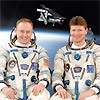
|
 |



